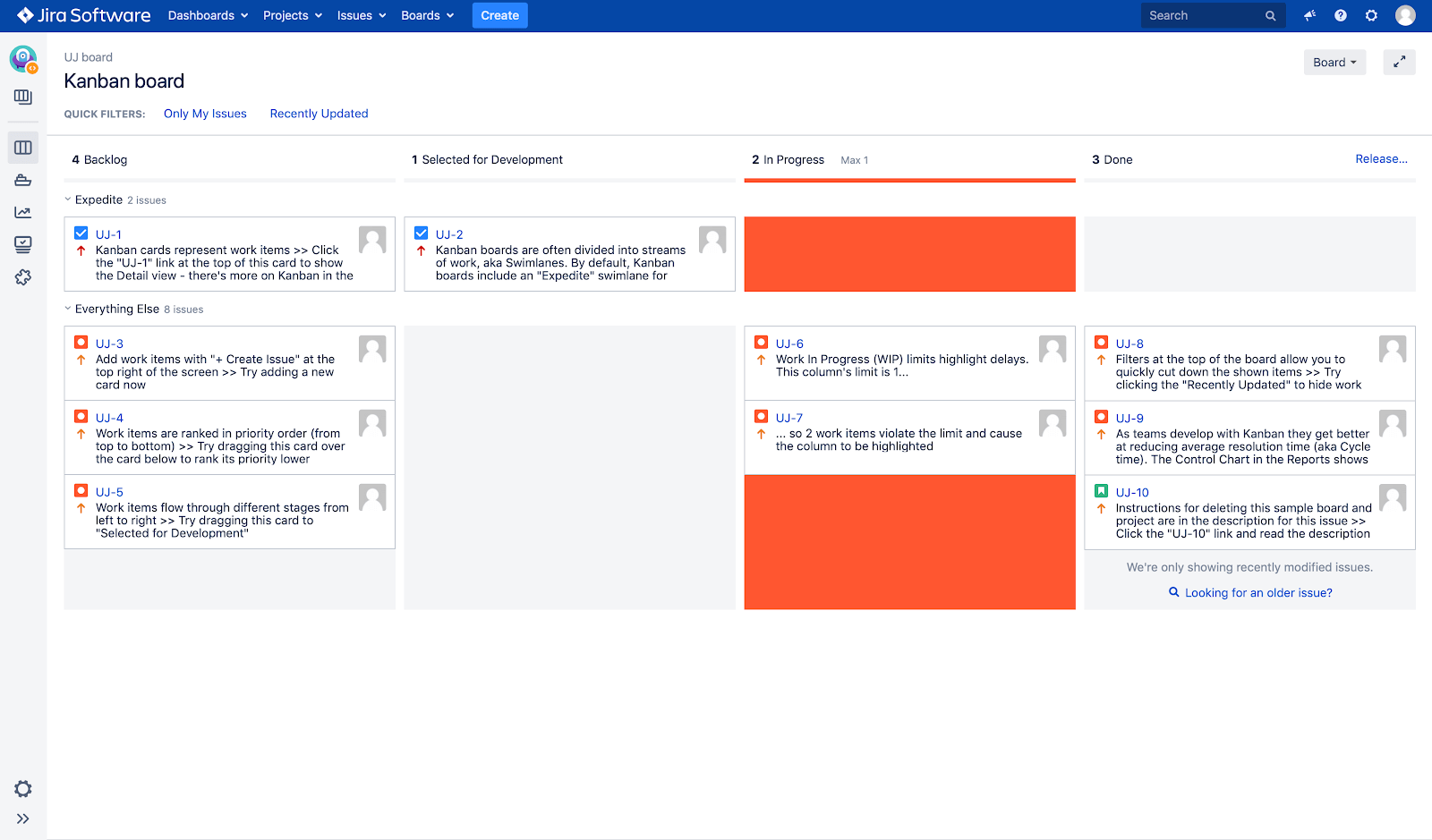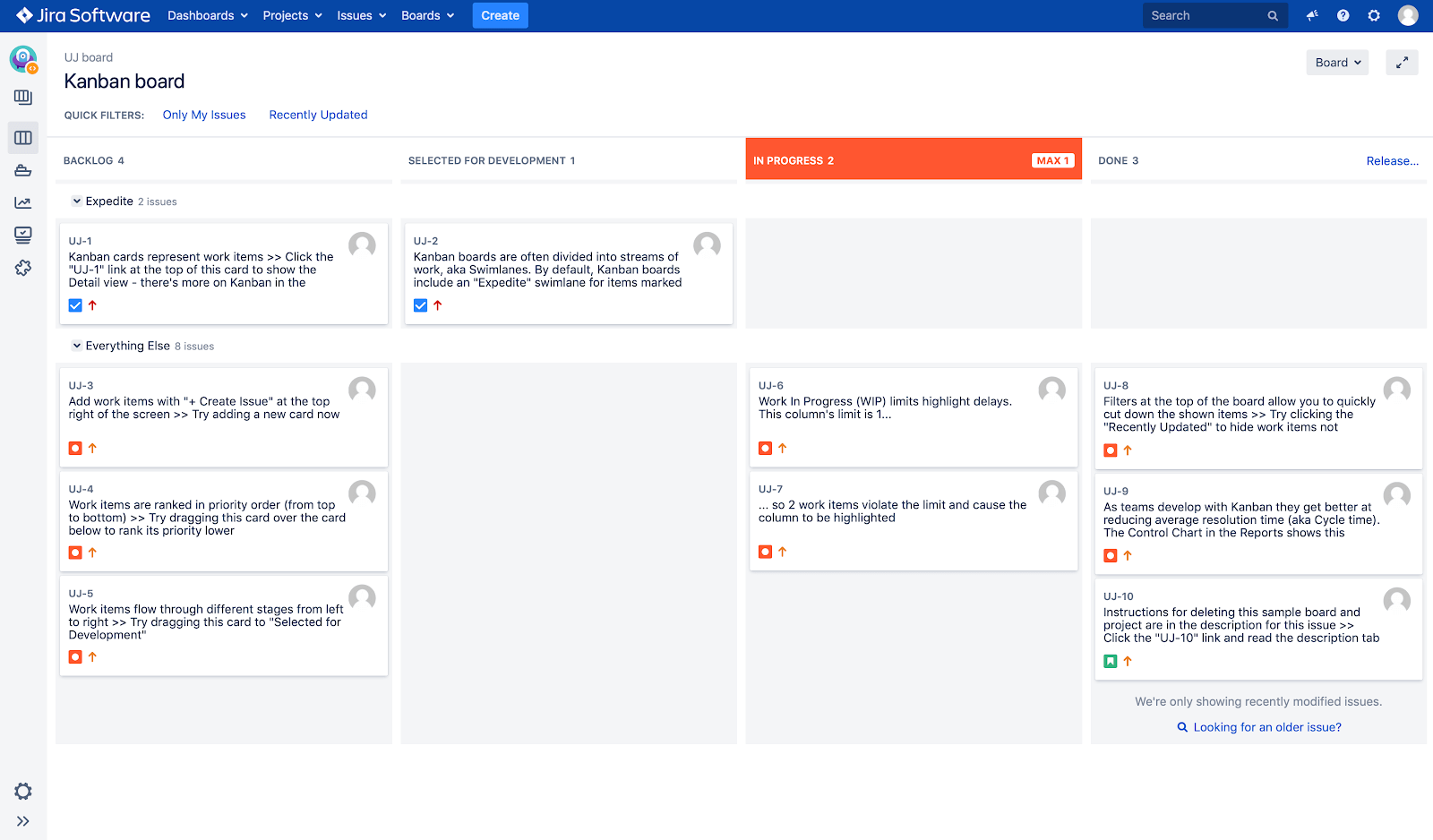Jira 8 is now robust enough to download

Atlassian Jira's major patches have historically been difficult to handle due to the base application changing a lot. Some of you may remember the horrors of moving from plugin-based Agile boards (known as GreenHopper) in Jira 6 to the built-in ones in Jira 7. By not upgrading directly to Jira 8.0.0, we tried to avoid major problems and wait for bugs to be patched. Jira 8 proved to be stable. It didn’t have major problems and plugin developers have had the time to catch up and make their add-ons compatible with Jira 8. So now it’s time to upgrade!
Atlassian has consistently been shipping new features and bug fixes throughout Jira 7 so there was no need to do major functionality changes when moving to Jira 8.
The biggest changes in Jira 8 are all under the hood – Atlassian decided to bring the whole Jira solution to the present day by upgrading underlying libraries and technologies. This improves Jira security and board response times by a lot.
What has changed?
The underlying infrastructure
Some of the biggest changes are:
- the deprecation of PostgreSQL 9.3 and MySQL 5.5;
- added support for MySQL UTF8 4-byte characters (yay, emojis!);
- lucene library upgrade which improves Jira indexing;
- an upgrade to Tomcat (application server used by Jira)
- Atlassian changed Jira Java from Oracle JRE 8 to AdoptOpenJDK JRE 8 in version 8.3.0.
From Oracle JRE 8 to AdoptOpenJDK JRE 8
Due to changes in Oracle Java licensing, Atlassian can not ship Jira with Oracle JRE starting from JRE 11. To prepare for this change, Atlassian pushed Jira 8.3 to AdoptOpenJDK JRE 8 and will be shipping Jira 8.6 with AdoptOpenJDK JRE 11.
Functionality-wise Oracle JRE 11 and OpenJDK JRE 11 are very similar but Oracle has made a decision to not release updates for previous OpenJDK versions when a new one comes out. This means that when OpenJDK JRE 11 was released, OpenJDK JRE 8 stopped receiving updates (this was already in January 2019). Also Oracle JRE 8 stopped receiving public updates.
Java 8 SE is still supported by Jira together with Java 11. If a company can not or does not want to upgrade from Java 8, they can purchase extended Java 8 SE support from Oracle and continue receiving updates.
All in all, Atlassian shipping Jira with AdoptOpenJDK makes Jira more resilient in regards to Oracle licensing changes. This also ensures up-to-date security and features in the future.
For a full list of infrastructure changes, read more here >
The look and feel
The look and feel of Jira boards has been updated but no major overhauls there – the changes were cosmetic and they are intended to improve Jira’s user experience.

Jira 7 Kanban board

Jira 8 Kanban board
The Atlassian User Interface (Atlassian’s frontend library) was also upgraded going to Jira 8 but those changes mostly affect plugin developers and the responsiveness of Jira UI.
Jira’s default priority icons have been updated based on user feedback. The icons had been reported as not being distinctive enough and Atlassian has put in some hours to improve the user experience around those.
Here’s a comparison of the old vs new icons.
![]()
Read more about the new Jira priority icons >
Jira 8.2.x also introduced new colors for issue statuses to make the Jira server and cloud more consistent.

Read more about new Jira status colors >
The performance improvements
From an administration point of view, the improvements to Jira indexing are a godsend.
Due to us having to reindex Jira after configuration changes, large instances have suffered from long reindexing times and thus not being able to reindex as often. Atlassian reports 71% faster reindexing duration, smaller index chunks (which means a faster, more stable Jira) and improvements to memory-related problems.
The library upgrades to Jira along with other changes improved application performance by a lot. Atlassian reports improvements in backlog loading times, board loading times, the time it takes to execute JQL queries and improvements in generic performance.
Here are some numbers based on Atlassian’s testing of 2 million issues, comparing Jira 7.13 to Jira 8
- Viewing boards improved by 62% (Data Center: 60%)
- Viewing backlogs improved by 87% (Data Center: 87%)
- Searching with JQL improved by 33% (Data Center: 31%)
- Browsing boards improved by 16% (Data Center: 22%)
- “We’ve also observed significant improvements (30 - 50%) when testing a typical action (mean of all actions that we run in our tests) in Jira containing different data sets (increased number of projects, issues, boards, workflows, and so on).”
How board-related changes affect Jira performance
The Jira CSV export has a default limit of 1000 issues to limit the system memory required to complete the export. The memory required to export issues has been improved by Atlassian (down to 57MB from 2GB previously in one test case) so the limit can be increased without having to worry too much. (Source)
Better searches, less email spam and improved archiving
There are two new JQL searching options, find authors (updatedBy = “username”) and find link types (issueLinkType = “issue link type name”).
When going through own tasks where the assignee has changed, the updatedBy search function is golden. The issue link type search has previously been available using a plugin so that is a welcome change as well.
To reduce the mail spam Jira sends out, Atlassian has introduced “batch emails” function which can be enabled by your Jira administrator. When the setting is enabled, if multiple issue updates occur in a short period of time (10 minutes), those are grouped into a single email.
Jira 8.1.x added component archiving meaning you can retain historical data while keeping issues easy to manage and update. Archived components will not appear when searching for components.
In Jira 8.3.x Atlassian introduced Content Delivery Network (CDN) for Jira Data Center meaning you can hook up Jira to your existing CDN solution and serve static assets through that to improve page load times for users in other geolocations.
The long-awaited Jira Mobile is finally here
And then finally...
One of the most anticipated changes has arrived.
JIRA MOBILE IS FINALLY HERE!
Atlassian pushed Jira Mobile to public beta during Jira 8.0.0 release but now in Jira 8.3.0 it is tested and available for Android 5.0 (Lollipop) or later, or iOS 12 or later (iPhone, iPad or iPod Touch). Jira will need to be updated to version 8.3.0 for the app to be able to connect to it.
The app improves Jira mobile usage substantially. The normal mobile site, which you can reach by navigating to Jira using your mobile browser, is focused around tasks assigned to the user and it is really difficult to navigate inside Jira to other projects or tasks not assigned to you.
When I have been using the mobile version of Jira, I often find myself switching to desktop version just to find my board or a random issue.
Using the app, I can easily navigate to a project, switch between different boards, and update issues with just a few taps. When using the issue searcher, you can only do text searches so no full JQL support yet. The app user experience is intuitive and you don’t really have to search for functionalities in the app – it only took me 15 minutes to get used to it.
At the moment, it seems like you can’t access scrum board backlogs via the app, but in my opinion, prioritization is something that should be done on a big screen anyway.
Published:
Updated:

